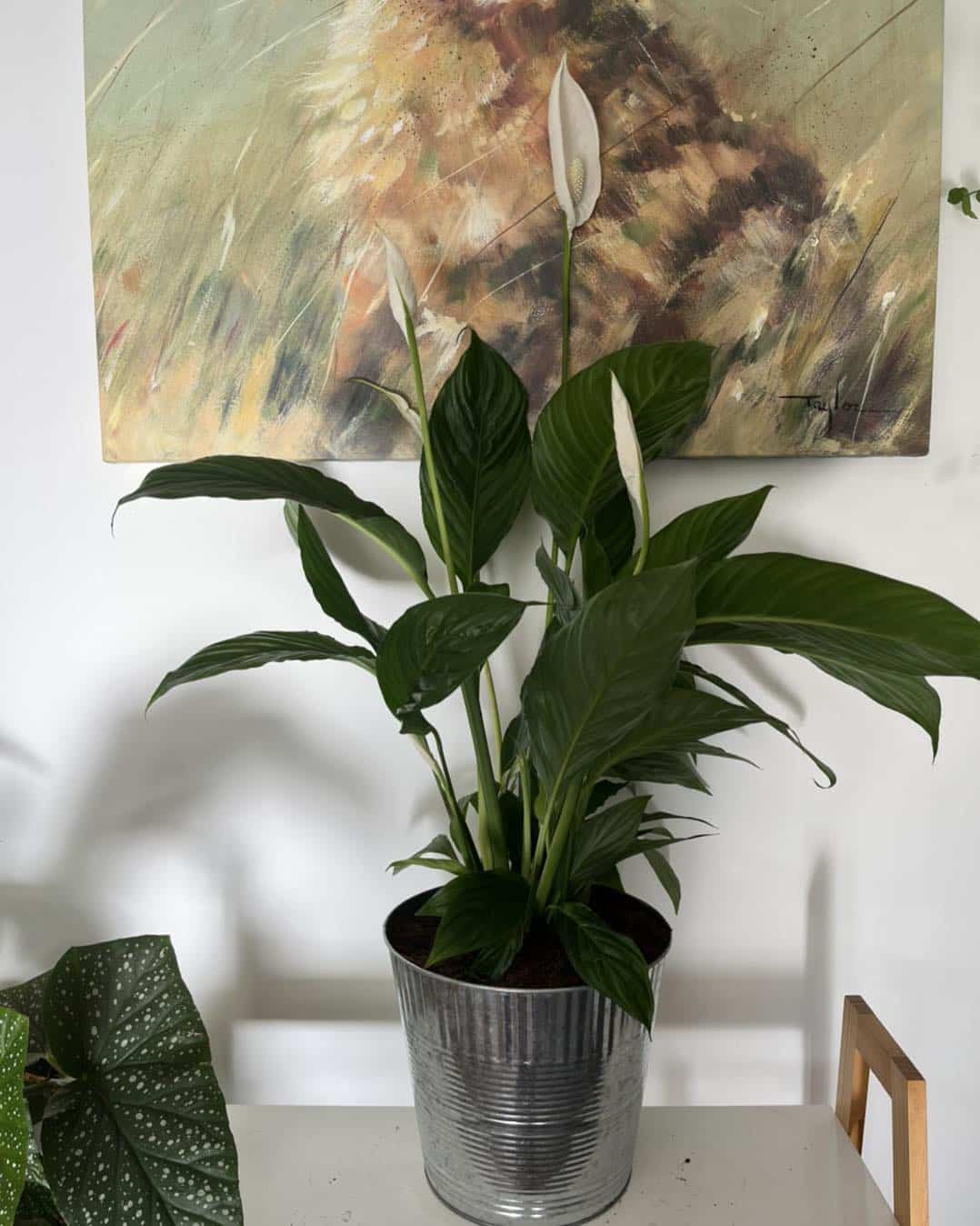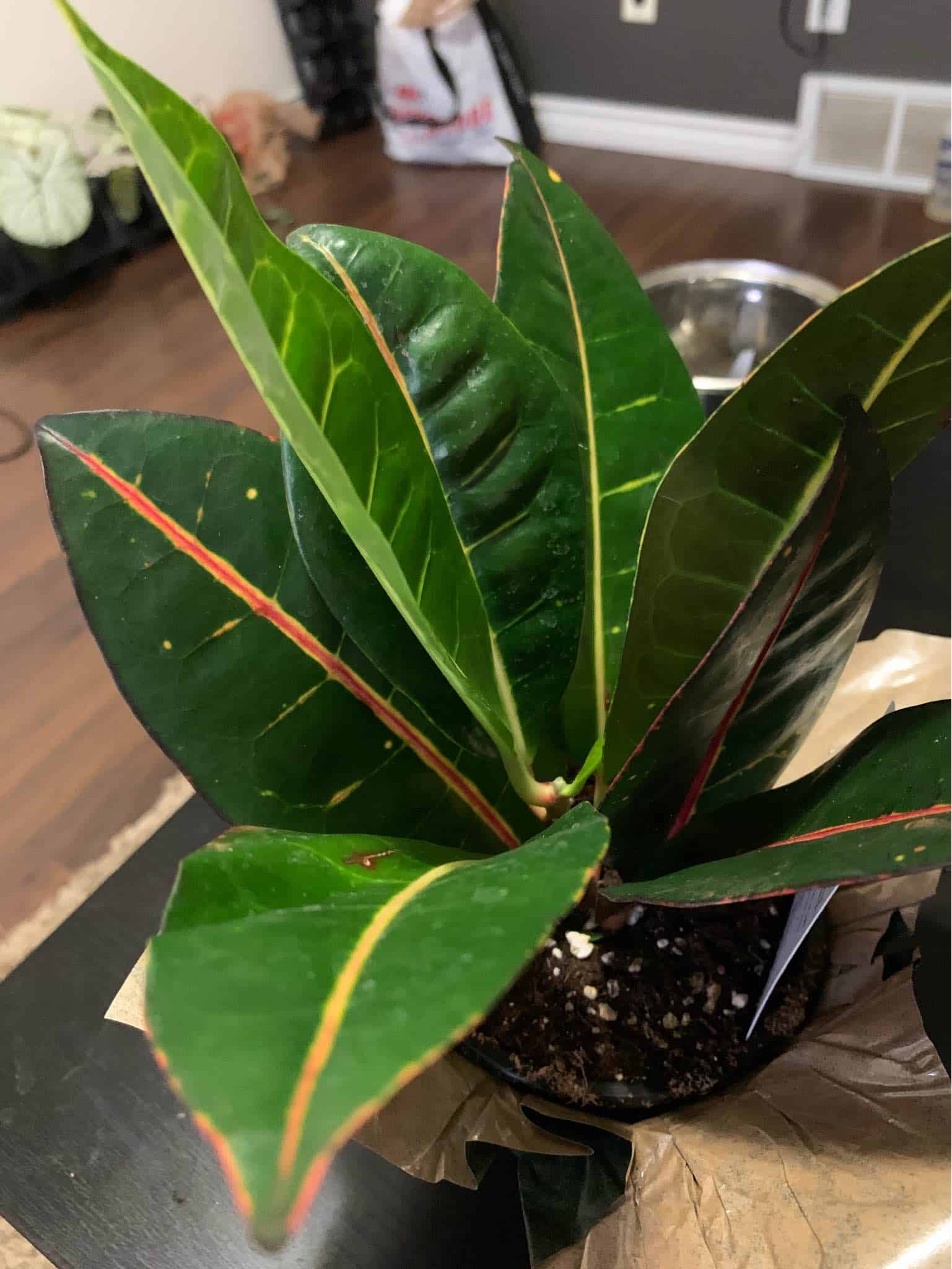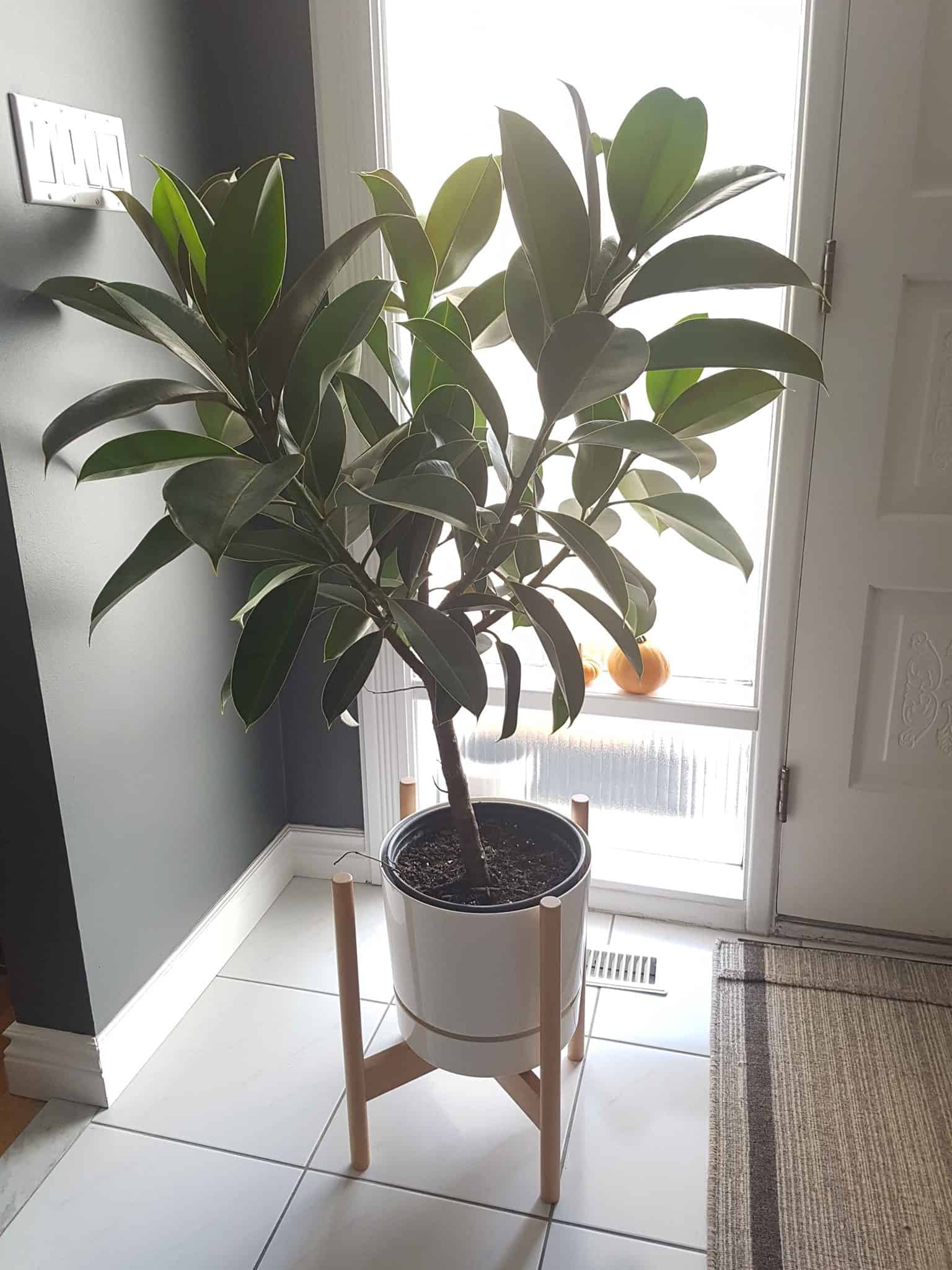Many houseplants love sitting near east-facing windows to get tender care of gentle morning sunshine.
But, keeping a suitable east-facing window plant is incomplete without considering the duration of light and position of the plants.
Learn here about the houseplants that you can place at the best location!
Table of Contents Show
Is East-Facing Window Good for Plants?
East-facing windows welcome soft but direct morning sunshine that is good for the leaves of many houseplants.
The direct morning light coming from east-exposing windows is fragile. In the afternoon, the sun rays entering from such windows become indirect but bright.
Leaves of the plants sitting beside east-facing windows rarely receive harsh light, which is helpful for plants that like to stay under dappling sunshine.
This negates the chances of leaf burn, underwatering, or increasing temperature, but there’s a high probability that your plants will grow healthy and strong.
In spring and summer, east-facing windows can receive direct sunlight from morning until noon.
However, the direct sunshine may enter only for a few hours in the morning during winter.
So, you don’t have to worry much about adjusting your houseplants for their placement beside east-facing windows.
10+ Perfect East-Facing Window Plants
Sunlight from an east-facing window is like a cup of strong morning coffee for the plants.
Houseplants remain active and can prepare their first meal of the day from such light.
But, some plants have specific requirements about the duration of incoming light from east-facing windows.
So, some houseplants can be more desirable for keeping near windows of eastern exposure.

1. Anthurium Plants
Anthuriums belong to the Aroid family and naturally thrive in rainforests where the light intensity matches the intensity of light coming from east-facing windows.
The growing season for most Anthurium varieties is spring and summer, but the plants have delicate leaves that cannot tolerate harsh sunlight.
If the summer sun is too intense, place Anthuriums at least 5 feet away from the eastern window.
Strong sunlight can cause yellow leaves, which later turn brown and crisp.
Too little sunlight can turn their leaves deep green, slow their overall growth, and induces the plant to bear fewer flowers.
So, keeping Anthuriums beside an east-facing window for 8 to 12 hours in spring and summer is enough for the plant.
2. Peace Lily
Peace Lilies are another tropical aroid preferring dappling sunlight.
The best place to keep Peace Lilies is near an east-facing window that greets 2 to 3 hours of direct morning sunshine in spring and summer.
Place your Peace Lily at least 6 to 8 feet away from the windows if the sunlight becomes strong in summer spells.

But you can also place them under fluorescent bulbs in winter for 16 to 18 hours daily to give them moderate light.
Leaves of Peace Lilies are sensitive to direct light, causing tip burns and brown spots if the leaves continuously receive direct sunlight.
Contrarily, less light can fade the leaf color, turning them yellow and resulting in fewer blooms.
3. Hoya Plants
Hoya plants are another tropical variety with decorative patterns on their thick, variegated, and slightly succulent leaves.
Less light can cause the leaves to lose these patterns and turn yellow. Plants may also refrain from producing flowers.
Usually, Hoyas require at least 2 to 4 hours of direct morning sunlight coming from east-facing windows in spring and summer.
Excess sunlight can burn the leaves after removing the plant’s moisture.
If you find the sun is too intense in summer, place curtains over the east-facing window to offer filtered light for Hoyas.
Hoyas thrive well in high humidity, and the area around east-facing windows collects enough surrounding humidity.
4. Croton Plants
Crotons prefer sunny locations, but numerous other varieties can tolerate partial shade and dappled sunlight.
Less light causes the colorful decorations on the leaves to fade, and the foliage turns completely dark green.
In Crotons, moderate lighting produces vibrant foliage, and the plant stays bushier.

So, consider placing Crotons at least 6 to 8 hours a day near an east-facing window in spring and summer.
The plants can also be placed about 5 feet away from eastern windows in summer to avoid harsh light.
5. Boston Ferns
Boston Ferns are not flowering plants and like to stay as companions by attaching and hiding below other tall plants in their natural home.
They also love areas with high humidity and moisture will less sunlight.
So, Boston Ferns are perfect east-facing window plants preferring bright indirect sunlight for at least 2 hours a day in spring and summer.
Less light harms Boston Ferns causing the tiny leaflets to fall from their fronds.
Likewise, the afternoon sun can burn their fronds. So, it would help if you protected them from direct mid-day sunlight.
It’s ideal for placing curtains over an east-facing window and locating your plant there at noon.
Long, dark to light-green fronds of Boston Ferns like to droop down from pots so that you can place the plants in hanging baskets over an eastern window.
6. Orchid Plants
Orchid plants are popular for a variety of forms in their colorful flowers.
But flowering is only possible if the plant gets strong sunlight for a few hours throughout the day.
However, continuous jarring sunlight can burn their leaves quickly.
Generally, keeping the Orchids beside an east-facing window for 5 to 8 hours is enough to promote green leaves and flowers.
Too little sunshine can stop Orchids from begetting flowers in time.
7. Umbrella Plants
Umbrella Plants are great additions to eastern windows due to their preference for bright indirect sunlight.
You will notice droopy leaves if the plant gets less light than regular.
Place Umbrella Plants for 4 hours daily about 3 feet away from the east-facing window or near the east-facing window that is dappled with curtains.

In summer, Umbrella Plants need 70% of shading from the direct scorching sun.
Direct sunlight, even for a little time, may burn their leaves.
Also, Umbrella Plants flourish best under the full sun outdoors, so they may refrain from showing the same growth rate indoors due to less light intensity.
8. Monstera Plants
Shade-loving Monsteras are well-adapted to thrive in dappling sunlight due to perforations on their leaves.
These holes allow the plant to filter out excess light and soak the sunlight only at the specific parts of the foliage.
Extreme sunlight burns the leaves of Monstera, resulting in brown to black margins, tips, or blotches on the leaf surface.
To save the leaves, place Monsteras for 5 to 12 hours beside an east-facing window in spring and summer.
Low light can pop symptoms like stunted growth, lack of splits or holes in the leaves, and declining dark-green coloration from the foliage.
Summer sun can be harsh for the leaves, so keep your Monstera about 5 feet away from the east-facing window to avoid direct sunlight.
9. Rubber Plants
East-facing windows are the best placements for Rubber Plants, but they can also survive in low-lit areas.
The leaves of the Rubber Plant are almost oval in shape with a mix of variegated colors like green, red, white, yellow, and cream or just plain green.

Although variegated Rubber Plant leaves need more light, the general rule is to offer 6 to 8 hours of filtered sunlight by placing the plant near an east-facing window.
Steady and sharp sunlight can burn the leaves, while less light causes leggy growth and falling of lower leaves from the plant.
If you want to protect Rubber Plants in summer, use drapes to sheer the excess light to offer the plant weak but bright light.
10. Fiddle-leaf Figs
In their native habitat, Fiddle-leaf Figs enjoy dappling sunshine from the forest canopy.
So, mimic a similar environment where the plant gets at least 4 to 6 hours of filtered sunlight by placing it beside an east-facing window.
These figs are known for their broad, ovate, and smooth green leaves that hate the direct afternoon sunlight.
Fiddle-leaf Figs may form dark-brown patches on the leaf tips and drop their leaves in summer if they receive continuous sunshine.
So, maintain at least 5 feet distance between the plant and incoming direct summer sunshine.
11. Jade Plants
Harsh light can elevate the temperature, sucking the water from the plant parts, but Jade Plants have thick leaves helping them to tolerate minimum heat.
For young Jade Plants, 4 to 6 hours of bright indirect sunlight in spring and summer is enough, but mature plants can bear direct sunlight for additional hours.
Still, excess light in the afternoon can scorch the leaves and turn them brown.
Weak sunshine in Jade Plants evokes leggy growth where the distance between the leaves increases and the plant weakens.

If sunlight is too harsh, it’s better to place your Jade Plant under LED grow lights for 12 to 14 hours daily.
12. Areca Palms
Areca Palms can do great in indirect bright lights and high ambient moisture.
So, a proper humid environment backed with filtered light for 6 hours daily by placing the plant near an east-facing window is supreme for Arecas.
Moreover, Areca leaves are susceptible to extreme or low light irregularities, showing yellowing, browning, or stunting growth.
So, careful consideration of lighting is essential for the full-fledged growth of the plant.
13. Philodendrons
Another lovable tropical aroid is Philodendron, with leaves sensitive to direct sunlight.
Placing Philodendrons near an east-facing window for 4 to 6 hours daily will provide the optimal lighting conditions that the plant requires for growth.
Since Philodendrons rarely tolerate high heat, prolonged exposure to sunlight can cause the leaves to become yellow, dry, and brown.
Conversely, less light can call up the lanky stems and leaves.
If you see any of these symptoms, it’s time to consider a proper lighting spot for Philodendrons.

Like the lovely Philodendrons, Pothos are another group of aroids that are easy going on the light requirements.
Additional Houseplants for East-Facing Windows
Let’s look at some more houseplants that can grow happily beside east-facing windows.
| Plants | Appearance | Indirect Sunlight Duration |
|---|---|---|
| Calathea | Large and variously-shaped leaves with different colorful variegations | 8 to 10 hours |
| Peperomia | Oval-shaped, thick, glossy green-colored leaves that are plain or variegated | 5 to 6 hours |
| English Ivy | Light to dark-green lobed leaves with prominent white veins | 8 to 10 hours |
| Snake Plant | Long sword-like erect leaves with patterns and variegations | 5 to 10 hours |
| Dumb Cane | Leaves are yellow in and near the center and green near the edges | 6 to 8 hours |
| Nerve Plant | Leaves are green with netting patterns of leaf veins spread over both the surface of the leaves | 5 to 6 hours |
Wrapping Up…
Before homing a new houseplant, check for the proper lighting locations or east-facing windows.
With lighting under consideration, your plants can happily spread their leaves and receive the kind care of morning sunshine!
